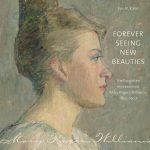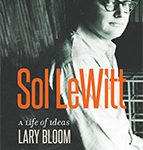
Today, September 30th, 2020, would have been Mary Rogers Williams’ 163rd birthday. The obscure, often forgotten American tonalist and Impressionist artist was most well known for her stunning pastel and oil portraits and landscapes. Born and raised in Hartford, Connecticut, as a baker’s daughter, Williams travelled widely throughout Europe when she wasn’t teaching in the art department at Smith College in Northampton, Massachusetts. An incredibly active woman, she hiked and biked across Europe, while chafing against art world rules that favored men, and writing thousands of pages that record her travels and work. Her paintings offer remarkable horizon views of ancient ruins, medieval towns, country meadows, and calm waters. Her work was exhibited at various venues in the United States and France while she was still living. Much of her work has stayed in Connecticut and the Northeast, held by institutions including the Smith College Museum of Art, Connecticut Landmarks, and the Connecticut Historical Society.
Forever Seeing New Beauties: The Forgotten Impressionist Mary Rogers Williams, 1857–1907, by Eve Kahn is a finalist for the Connecticut Book Award. The book is up for the Bruce Fraser “Spirit of Connecticut” Award. Bruce Fraser, director of Connecticut Humanities for 28 years, was a proponent of Connecticut’s sense of place. He was interested in how places evoke memory and emotions from people, how people have such ferocious identification and loyalty to their surroundings and how the very landscape influences people. Mary Rogers Williams’ life and legacy embody the values of this award—Williams was deeply tied to, influenced by, and involved with her roots in Connecticut.

Green Landscape—Hills in the Distance (probably Connecticut
River Valley), 1903 pastel, 12 ½ x 22 in. Smith College Museum of Art,
Northampton, MA, gift of the sisters of Mary Rogers
Williams
Until recently, little was known or remembered about Williams. But in 2012, the artist’s confessional letters as well as hundreds of her paintings and sketches turned up in storage at a Connecticut family’s home. The resulting book reveals her as strong, funny, self-deprecating, caustically critical of mainstream art, and observant of everything from soldiers’ epaulettes to colorful produce layered on delivery trucks. She was determined to paint portraits and landscapes in her distinctive style—and so she did. The book reproduces her unpublished artworks that capture pensive gowned women, Norwegian slopes reflected in icy waters, saw-tooth rooflines on French chateaus, and incense hazes in Italian chapels. Forever Seeing New Beauties offers a vivid portrayal of an adventurer, defying her era’s expectations on a tight budget. Today we remember Mary Rogers Williams for her standout style, adventurous personality, and bold wit.
The author, Eve Kahn, will be lecturing on the book for Boston Design Week, on October 14th, in remote event. Learn more and register here.

Some of Mary Rogers Williams’ letters and papers. Photo by Eve Kahn.




















